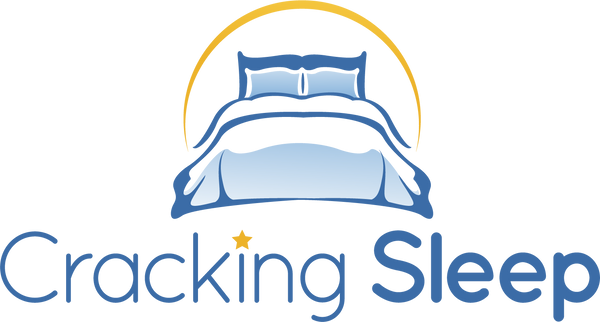Read time: 5 minutes
What’s inside?
- I snore or stop breathing… what could I try?
- What about the things you put into your mouth?
- It really isn’t all doom and gloom!
I snore or stop breathing… what could I try?
Although we are talking here about things you can put into your mouth to help you breathe better during sleep… and potentially help with snoring or sleep apnoea, there is a simpler first option… sleep tape.
Sleep tape isn’t for everyone. Firstly, you need to have clear nostrils, i.e. no congestion, and be able to breathe through your nose.
If you are normally a mouth breather, you may be able to teach yourself to breathe through your nose simply by trying to use mouth tape. This is not medical advice though, so if you are at all unsure it may be a good idea to speak with your doctor or sleep specialist first. If you suffocate and die, don’t come around blaming me!
Mouth tape comes in various shapes and materials. Fabric ones tend to get better reviews than plastic (probably coz they stretch a bit for comfort) and some people find using a medical tape like Micropore™ to work just fine too.
What about the things you put into your mouth?
Well, there’s a few options, including…
Mandibular Advancement Device (MAD) and Splint (MAS) oral devices
These are custom-made and fitted by a dentist. They work by pushing the bottom jaw forward (or advancing) slightly. The intention here is to pull the back of your mouth away from the throat… and therefore keep the airway open.
For some people, using an oral device means they keep the airway open enough to reduce snoring or apnoea events enough to avoid using CPAP equipment at all. This usually benefits patients with snoring-only or mild sleep apnoea although there’s no reason it couldn’t help others too. It all comes down to what is causing the event in the first place.
This discussion came about when one of our email readers told us how they leave their CPAP machine at home when travelling and rely on a Mandibular Advancement Device for that short time instead.
As with anything though, there are potential downsides. Some users have reported discomfort in their jaws, tooth pain, or even changes in their bite over time.
Long-term use of oral devices, like MADs, may lead to permanent changes in how your jaw works or even how your smile looks.
Not all oral devices or splints are made equal though. The distinction here lies in the designy bits intended to enhance comfort and fit… and… if I fits better… you’re more likely to keep using it… right?
And speaking of fit… oral devices are not a fit and forget option. Regular follow-up checks with your dentist would be needed to ensure the device continues to work as intended.
So, if you choose to go down this route, it may be a good idea to do your homework before plunging in. Nobody likes wet homework.
Tongue Retaining Devices (TRDs)
TRDs are another type of oral appliance specifically designed to hold the tongue in a forward position during sleep, preventing it from falling back into the throat and obstructing the airway. This is particularly beneficial for patients whose sleep apnoea is exacerbated by tongue positioning rather than other airway collapses. TRDs are often seen as more tolerable for patients who cannot adapt to the jaw-jutting techniques used in other oral devices.
Downsides? Of course there are.
The primary challenge with TRDs is the adjustment period; they can be uncomfortable to use and may cause excessive salivation or dry mouth. Some users also report gagging sensations or difficulty getting used to the presence of the device in the mouth during sleep. As with other oral appliances, effectiveness varies depending on individual patients. One stat that does seem to run through TRDs though is they appear to be less suitable for patients with severe OSA.
Soft Palate Lifters
Soft Palate Lifters are less common but serve an innovative role in managing sleep apnoea by mechanically lifting the soft palate to reduce airway obstruction. For patients who have issues primarily with soft palate collapses as opposed to problems at the level of the tongue or lower throat, these devices can provide a targeted solution.
That said, the fact they have quite a distinctive name also highlights their limited use.
They are only suitable for a specific subset of people. There is also the issue of discomfort and the potential for causing soreness and irritation in the mouth and throat. After all, as with the Tongue Retaining Devices, these work by attaching to some of the most sensitive bits of the human body.
So, probably a last resort when medical advice tells you there’s no other options left.
Thanks for the doom and gloom!
No… wait a minute… it really isn’t all that bad.
As we’ve gone down this list of options, each one becomes more bespoke… requiring more customised fitting. As a result, the closer you get to tongue and palate devices… the more invasive they get.
It isn’t all doom and gloom though. Oral appliances really do offer a valuable alternative to CPAP therapy and are especially useful in mild to moderate cases or in patients who struggle with the ‘ramming forced-air’ invasiveness of CPAP machines.
Each type of device has its own set of advantages and drawbacks, and the choice of device typically depends on individual patient factors such as the specific reasons contributing to the apnoea, patient comfort and tolerance, and the overall severity of the condition.
Yep, they can be uncomfortable before getting used to the experience of having something stuck in your mouth while you try to sleep, but how may of us CPAP users can say we put that mask on for Night One and took to it straight away?
Not many… if any.

